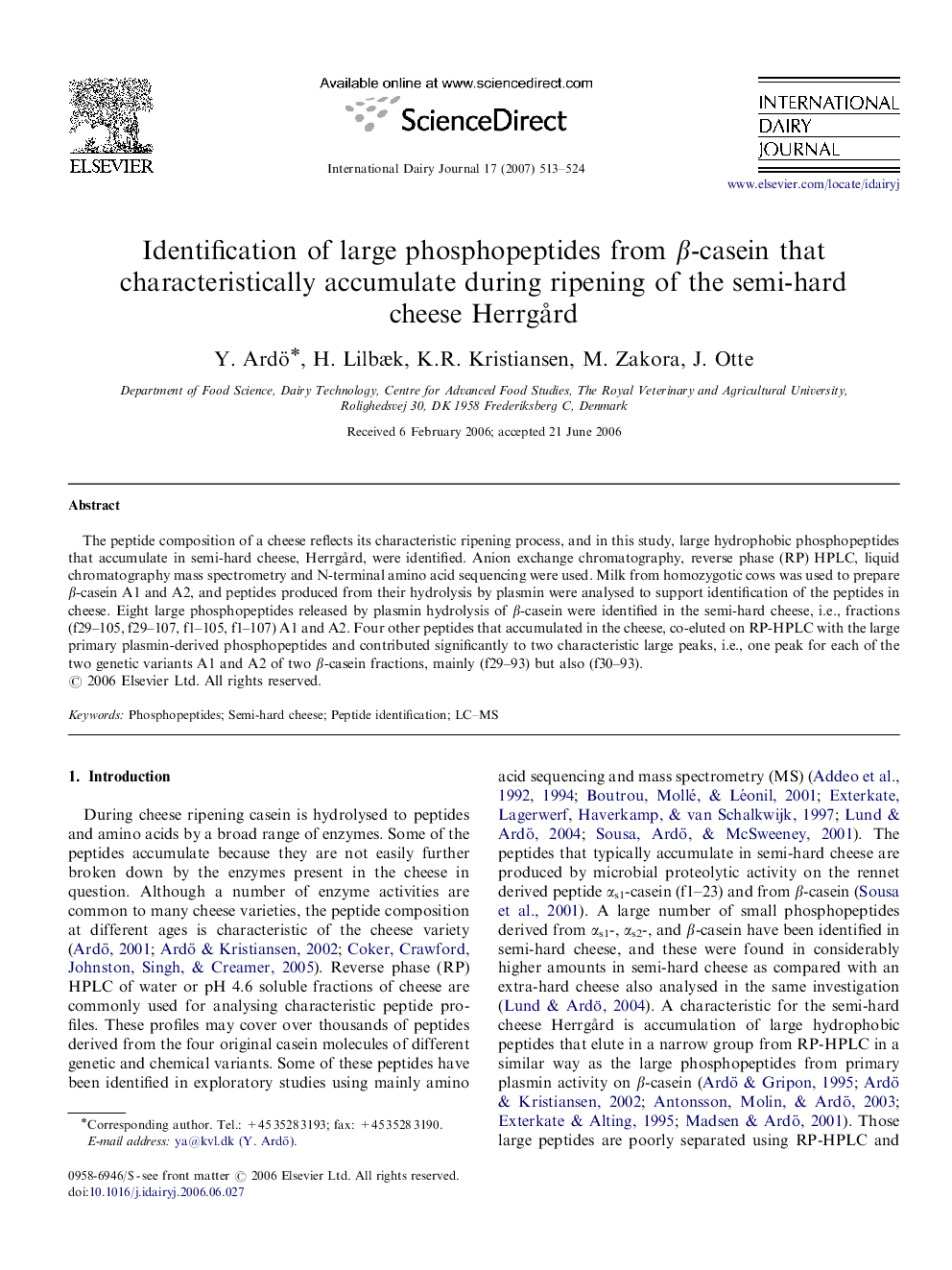| Article ID | Journal | Published Year | Pages | File Type |
|---|---|---|---|---|
| 2435475 | International Dairy Journal | 2007 | 12 Pages |
The peptide composition of a cheese reflects its characteristic ripening process, and in this study, large hydrophobic phosphopeptides that accumulate in semi-hard cheese, Herrgård, were identified. Anion exchange chromatography, reverse phase (RP) HPLC, liquid chromatography mass spectrometry and N-terminal amino acid sequencing were used. Milk from homozygotic cows was used to prepare β-casein A1 and A2, and peptides produced from their hydrolysis by plasmin were analysed to support identification of the peptides in cheese. Eight large phosphopeptides released by plasmin hydrolysis of β-casein were identified in the semi-hard cheese, i.e., fractions (f29–105, f29–107, f1–105, f1–107) A1 and A2. Four other peptides that accumulated in the cheese, co-eluted on RP-HPLC with the large primary plasmin-derived phosphopeptides and contributed significantly to two characteristic large peaks, i.e., one peak for each of the two genetic variants A1 and A2 of two β-casein fractions, mainly (f29–93) but also (f30–93).
